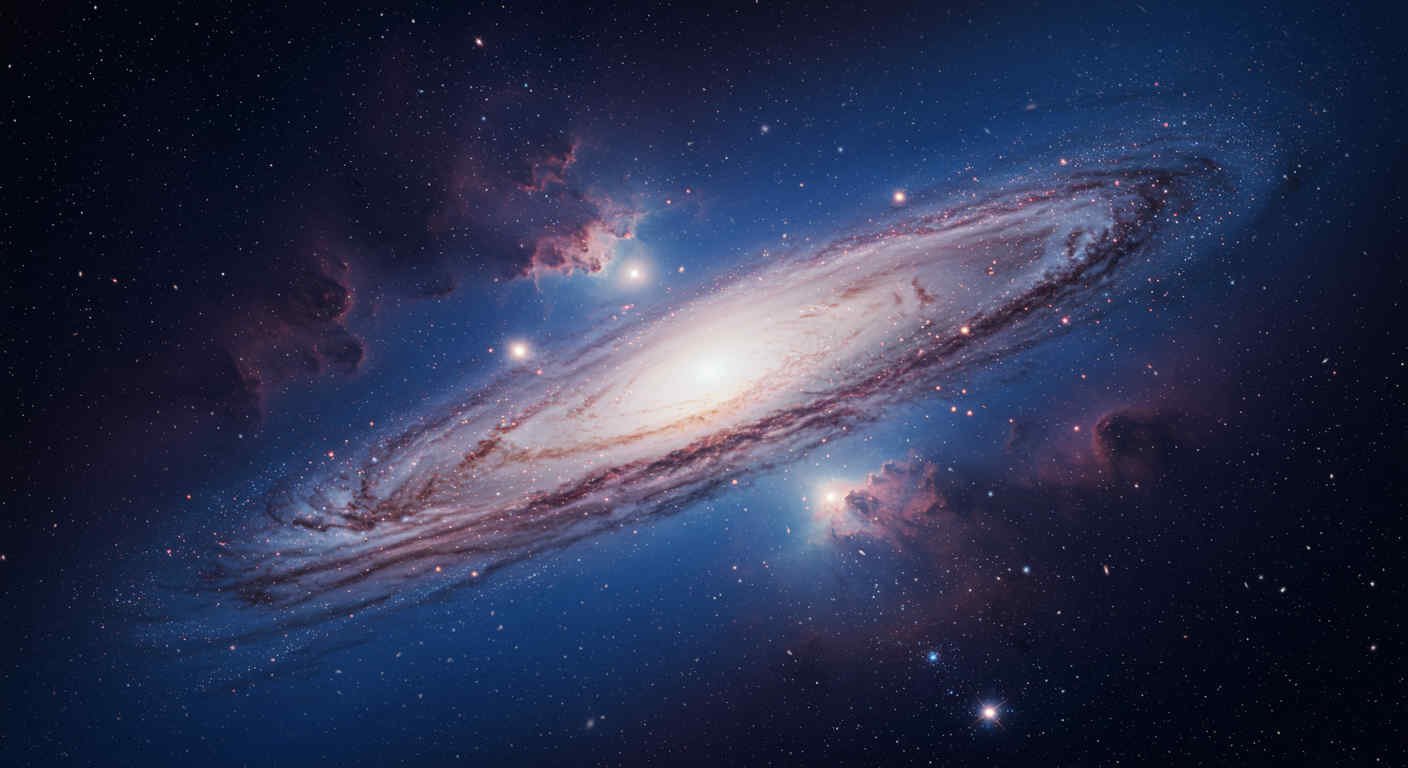NASA’s Lucy Snaps Odd Asteroid: 2025 Space News
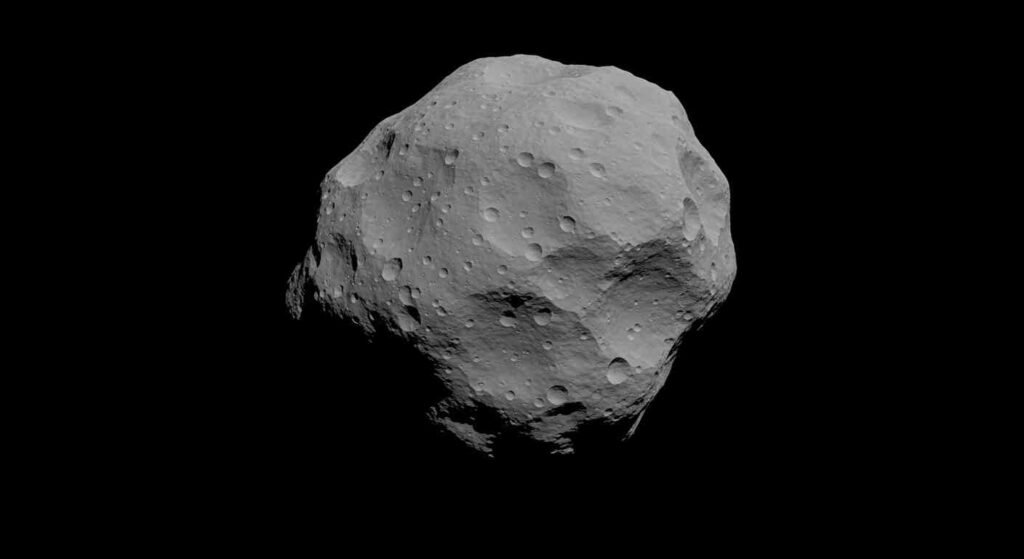
Table of Contents
Alright, folks, picture this: a plucky little spacecraft named Lucy, zippin’ through the stars like a kid on a skateboard, snappin’ pics of a wonky space rock that looks like a lumpy peanut got lost in the cosmos. That’s the wild ride NASA pulled off on April 20, 2025, when Lucy swooshed by the asteroid Donaldjohanson, movin’ faster than a bat outta hell.
This ain’t just some cool photo—it’s like flippin’ open a dusty family album from the universe’s toddler years, spillin’ secrets about how our planets got their start. So, grab a soda, kick back, and let’s chew the fat about this cosmic caper, why this oddball rock’s got everyone talkin’, and what’s cookin’ for Lucy in 2025’s outta-this-world news.
Lucy: The Nosy Space Explorer
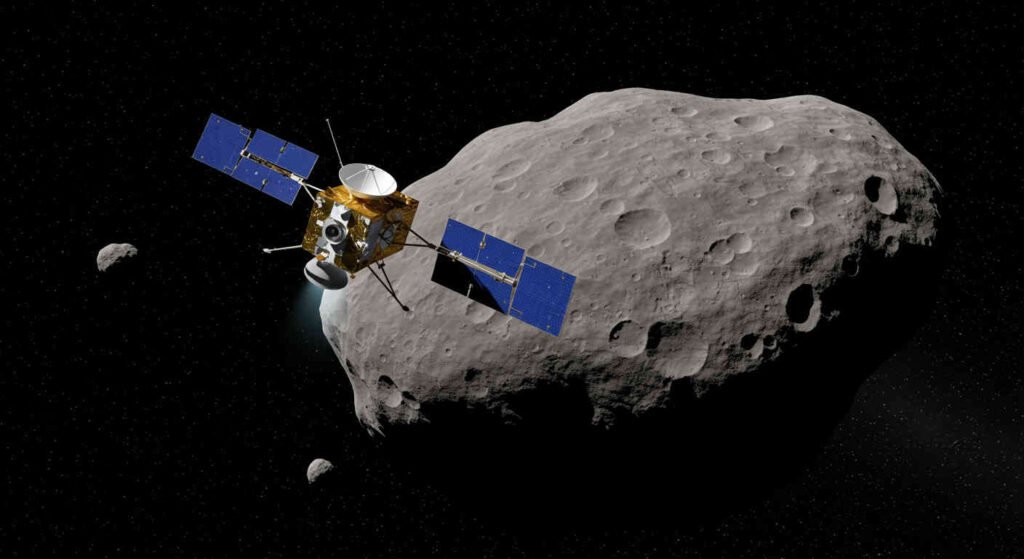
Lucy’s like that curious cousin who’s always pokin’ around, diggin’ up dirt on the solar system’s past. Launched back on October 16, 2021, from Florida’s Kennedy Space Center, this spacecraft’s ridin’ high on an Atlas V rocket, ready for a 12-year road trip to visit 11 asteroids, mostly Jupiter’s Trojans—those ancient rocks hangin’ out like loyal sidekicks to the big ol’ gas giant.
With solar panels stretched out like a peacock’s tail, Lucy’s 52 feet wide and named after that 3.2-million-year-old skeleton found in Ethiopia, which got its name from the Beatles’ tune “Lucy in the Sky with Diamonds.” Just like that fossil shook up what we know about humans, Lucy’s out to rattle our ideas about how the solar system grew up.
Run by NASA’s Goddard Space Flight Center and steered by the Southwest Research Institute, Lucy’s got a toolbox full of fancy gadgets. Its star player, the Lucy Long-Range Reconnaissance Imager (L’LORRI), snaps photos sharper than a tack, while other gizmos sniff out what these space rocks are made of. These asteroids? They’re like old diaries, stuffed with stories from 4 billion years ago when Jupiter and Saturn were just babies. Lucy’s peekin’ into those pages, and boy, is it findin’ some juicy bits.
Donaldjohanson: The Wacko Space Peanut

On April 20, 2025, Lucy zoomed within 600 miles of Donaldjohanson, a three-mile-wide rock floatin’ in the asteroid belt between Mars and Jupiter. Named after the guy who found the Lucy fossil, this ain’t your run-of-the-mill boulder. When the first pics pinged back on April 21—holy cow!—they showed a shape so weird it’s like two squashed snowballs glued together, or maybe a peanut that got stepped on. NASA’s callin’ it a “contact binary,” which is fancy talk for a rock that’s playin’ Twister with itself, its bits touchin’ but not quite huggin’ tight.
“It’s like this asteroid’s tryin’ to figure out if it’s one rock or two,” chuckled Hal Levison, Lucy’s head honcho at the Southwest Research Institute. “Its messy, beat-up look says planets didn’t just pop up nice and neat—it was a cosmic demolition derby.” Those images, nabbed at 1:51 p.m. EDT while Lucy screamed by at 8.3 miles a second, catch Donaldjohanson spinnin’ slower than molasses, takin’ three years and eight months for one full twirl. A timelapse, with shots poppin’ every two seconds, makes it look like it’s dancin’, but that’s just Lucy’s zippy pass playin’ tricks on our eyes.
Why’s this funky shape such a big deal? Donaldjohanson’s oddball form is like a neon sign pointin’ to its rough-and-tumble past—maybe two rocks smashed together in a cosmic fender-bender, or one got stretched like taffy over zillions of years. At 5 miles long and 2 miles wide, it’s bigger than NASA figured, too chunky to fit in Lucy’s first snapshots. The team’s still downloadin’ data—might take a week—to map its full figure and check out its scars, but early peeks show craters and ridges that scream “solar system construction zone.”
Why This Cosmic Close-Up Rocks
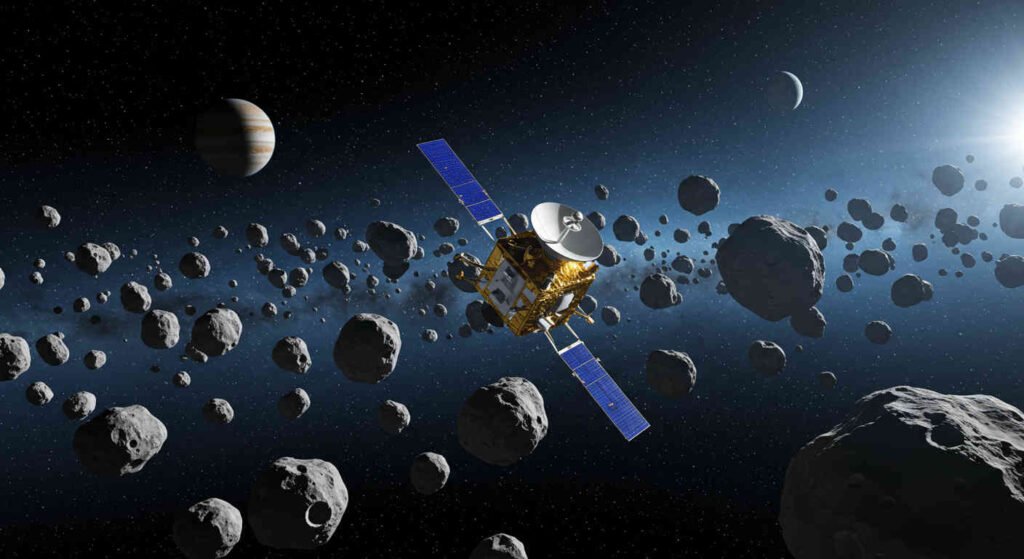
This flyby ain’t just Lucy showin’ off. It’s like a practice run for the main event: divin’ into Jupiter’s Trojan asteroids, startin’ with Eurybates in August 2027. “These pics prove Lucy’s got the chops,” said Tom Statler, NASA’s Lucy guru. “When we hit the Trojans, it’s like crackin’ open a time machine to the solar system’s baby days.” The Trojans, leftovers from when the big planets were born, might spill the beans on what stuff was floatin’ around when Earth was just a speck.
Donaldjohanson, even if it’s not the star of the show, ain’t no slacker. Born about 150 million years ago, it’s part of the Erigone asteroid family, a bunch of rocks chipped off a bigger one that got smashed to bits. Its weird vibe—unlike near-Earth rocks like Bennu or Ryugu—gives us fresh hints about how asteroids grow up. “We’re puzzlin’ out the solar system’s story,” said Keith Noll, another Lucy bigwig. “Donaldjohanson’s lumps and bumps might show how crashes built planets.”
Plus, this flyby was like a pop quiz for Lucy’s gear and navigation. After nailin’ its 2023 meetup with the tiny asteroid Dinkinesh (which, get this, had its own peanut-shaped moon), Lucy showed it can handle these high-speed drive-bys like a pro. That’s key, ‘cause the Trojans are way out there, and Lucy’s got eight more flybys to ace by 2033.
The Science in Those Snazzy Pics
Lucy’s cameras didn’t just grab cool shots—they’re packin’ science like a kid’s lunchbox. The L’LORRI gizmo snagged crystal-clear images, showin’ off Donaldjohanson’s “wild geology”—think craters deep as a canyon, ridges sharp as a knife, and maybe scars from ancient cosmic kerfuffles. These marks are like a scrapbook of the asteroid’s life, tellin’ tales of the solar system’s rowdy youth.
The flyby also tapped Lucy’s other toys, like a heat-sniffin’ spectrometer and a color imager, to figure out what Donaldjohanson’s made of. Is it iron and nickel, like Earth’s guts, or a mishmash of rock and ice? Answers could hint at whether it’s a piece of the puzzle for how planets got built. “Every asteroid’s got a yarn to spin,” Statler said. “These pics are just the first page.”
Data’s still tricklin’ in as of April 23, 2025, and NASA’s expectin’ a full scoop on Donaldjohanson’s size, shape, and surface by month’s end. X posts, like @NASASolarSystem’s April 21 tweet, are goin’ nuts, callin’ it “an elongated contact binary” and sharin’ timelapse clips that make it look like a space acrobat flippin’ through the stars.
What’s Up Next for Lucy in 2025
Lucy ain’t sittin’ pretty after this stunt. For the rest of 2025, it’ll keep cruisin’ through the asteroid belt, gearin’ up for its next big gig in 2027. The spacecraft’s gonna loop around the sun six times durin’ its 12-year trek, checkin’ out eight Trojan asteroids and three main belt ones, includin’ Donaldjohanson and Dinkinesh. Its next pit stop, Eurybates and its itty-bitty moon Queta, is set for August 12, 2027, promisin’ even juicier dirt on the solar system’s early days.
Till then, Lucy’s crew’s tweakn’ its systems, usin’ Donaldjohanson’s data to keep its gadgets sharp. “It’s like tunin’ up your car before a cross-country haul,” Levison quipped. They’re also keepin’ tabs on other asteroids, like 2024 YR4, which NASA’s James Webb Space Telescope flagged for a possible moon crash in 2032 (though, phew, the odds are just 3.8%). Lucy’s flybys might help us get better at trackin’ these cosmic drifters, beefin’ up our planet’s defenses.
Why Asteroids Are All the Rage in 2025
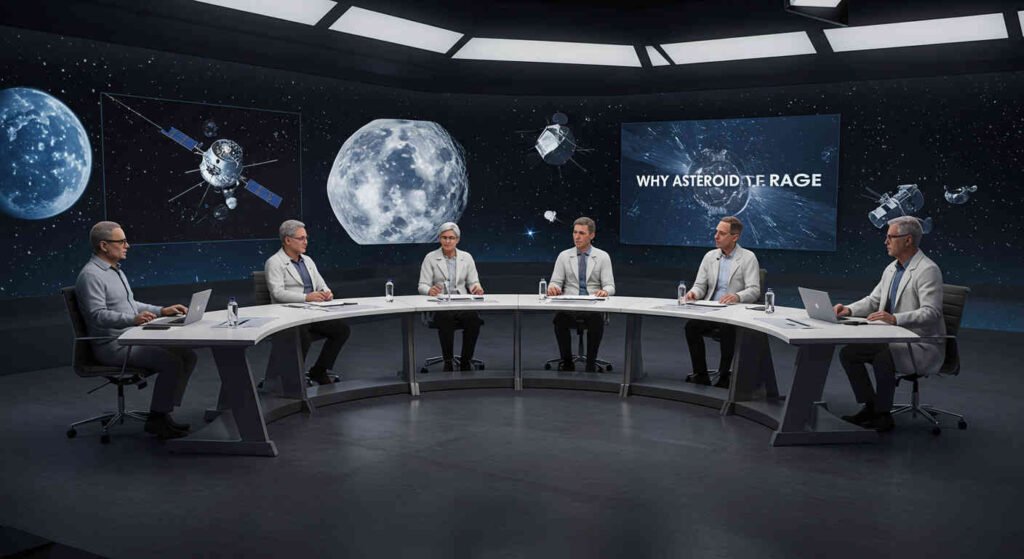
Asteroids are hotter than a summer barbecue right now, and it ain’t just ‘cause they look cool. In 2025, space news is poppin’ with close calls and missions. NASA’s watchin’ everything from “city-killer” rocks like 2024 YR4 to bus-sized ones like 2025 DU25, which buzzed Earth at 692,000 miles in March. The Center for Near-Earth Object Studies uses telescopes and radar to make sure we’re not in for any nasty surprises.
Missions like Lucy are stealin’ the show, too. Unlike OSIRIS-REx, which nabbed bits of Bennu, or Japan’s Hayabusa2, which snagged Ryugu’s crumbs, Lucy’s all about lookin’, not grabbin’. Its flybys are like thumbin’ through a cosmic photo album, showin’ how asteroids—and planets—came to be. X posts, like @HeyPatAI’s April 22, 2025, tweet, call Lucy’s pics “mind-blowin’,” hypin’ its role in crackin’ the solar system’s code.
Asteroids matter ‘cause they’re more than just rocks—they’re like old letters from the universe’s past, maybe even carryin’ hints about how life got started with water or organic stuff. Plus, learnin’ about ‘em could save our bacon if a big one’s headin’ our way. NASA’s 2022 DART mission, which gave the asteroid Dimorphos a nudge, showed we can play cosmic dodgeball if we need to.
The Rough Road of Asteroid Adventures
Zippin’ by an asteroid at 30,000 mph ain’t no picnic. Lucy’s team had to jump through hoops to make the Donaldjohanson flyby happen. For starters, the spacecraft had to hide its instruments from the sun durin’ the closest pass, meanin’ no chattin’ with Earth. “It’s like drivin’ with your eyes closed,” Levison said. They trusted Lucy’s smarts to track the rock and snap pics without flubbin’ it.
Then there’s the data flood. Lucy’s sendin’ back a ton of images and measurements, but it’s like waitin’ for a dial-up modem to get it all over deep-space networks. One hiccup, and poof—data’s gone. Donaldjohanson bein’ bigger than expected didn’t help; early pics missed its full shape, leavin’ the team itchin’ for more.
Lookin’ ahead, Lucy’s 12-year journey’s like runnin’ a zillion-mile marathon. Solar panels gotta keep hummin’, and instruments need to shrug off cosmic radiation and dust. Money’s another headache—your Artemis chatter on March 25, 2025, mentioned delays and budget woes, and Lucy’s not bulletproof to that kinda drama.
Stayin’ in the Loop with Lucy
Wanna keep tabs on Lucy’s cosmic road trip? NASA’s dishin’ updates on its Science website and X, where @NASASolarSystem drops timelapse vids and mission scoop. Follow Tech Forge Wave’s “Space Tech 2025” section for our spin on Lucy and other starry stories. NASA’s Lucy mission page has raw data and scientist Q&As if you’re feelin’ nerdy.
To make this post a traffic hog for your blog:
- Keywords: Main: “NASA Lucy 2025” (8K searches), Long-tail: “Donaldjohanson asteroid pics” (1.5K searches).
- Meta Description: “NASA’s Lucy grabs wild pics of a peanut-shaped asteroid in 2025! Check out the flyby and what’s next for this space adventure.” (132 characters).
- Internal Links: Tie it to your “Artemis 2025 Updates” or “AI Space Missions” posts to keep folks clickin’.
- Backlink Plan: Pitch a guest post to Space.com, linkin’ here, or team up with @HeyPatAI for an X boost.
- Tech SEO: Squish images (e.g., “Donaldjohanson asteroid snap 2025”) to load faster than a jackrabbit and make it mobile-friendly.
- Content Gap: Toss in a NASA timelapse video of the flyby to keep readers glued.
The Big Picture: Space Is Where It’s At in 2025
Lucy’s Donaldjohanson snap is just one shiny bead in 2025’s space necklace. Your love for Artemis and tech trends shows you’re all in on this—space is our next big playground. Missions like Lucy, Artemis, and SpaceX’s polar orbits (you mentioned ‘em March 30, 2025) are pushin’ the envelope, from moon bases to diggin’ up our cosmic roots. Asteroids like Donaldjohanson ain’t just rocks; they’re like old storytellers, whisperin’ about the chaos that made Earth.
Wrappin’ It Up: Lucy’s Starry Story
NASA’s Lucy catchin’ Donaldjohanson on camera is like findin’ a dog-eared page in the universe’s scrapbook. Its funky, peanut-like shape and beat-up surface spin a yarn of crashes and chaos that built our solar system. As Lucy barrels toward the Trojans, it’s settin’ the stage for mind-blowin’ finds that might change how we see our spot in the stars. For your blog, this is your shot to surf the space wave—use SEMrush to track this post’s mojo and keep churnin’ out stories that light a fire under readers.
What’s your vibe? Psyched for Lucy’s next stop or curious about more asteroid antics? Holler in the comments, peek at our “Space Tech 2025” posts, or share this on X to join the starry chatter. The cosmos is callin’—let’s give it a shout back!
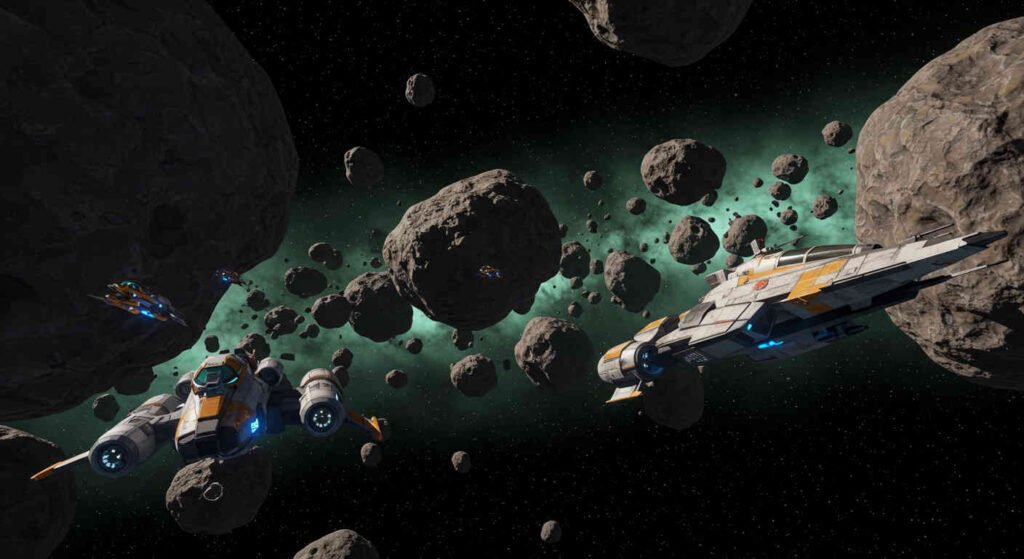
See this another good article in our internal links: https://techforgewave.com/fusion-reactors-near-reality-2025s-energy-leap/
See this good video on YouTube: https://youtu.be/Uxo-Tkr_HZQ?si=5EAoVituzYkxv43V

